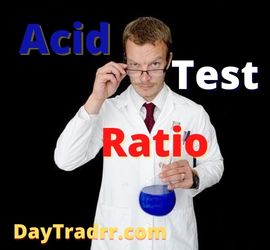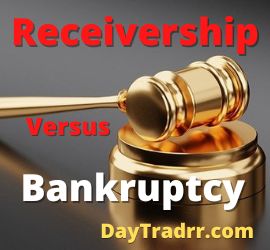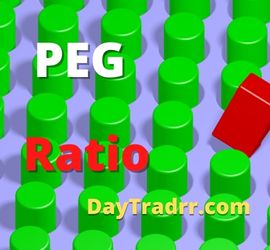What Is a Variable Interest Entity (VIE)?
 A variable interest entity (VIE) is a legitimate business structure where an investor can have controlling interest without holding majority voting rights.
A variable interest entity (VIE) is a legitimate business structure where an investor can have controlling interest without holding majority voting rights.
A variable interest entity is a legal corporate structure. It is established such that a single investor can control the company while not having majority voting rights. The controlling interest is handled through a contractual partnership rather than through direct ownership. Characteristics include a structure where equity owners do not have to fund the business’s continuous operating demands. The VIE is typically used to safeguard the firm from creditors or legal action. Variable interest entities are often employed as special purpose vehicles. In turn, these are used to finance certain investments without exposing the parent business to risk. Companies that are the major beneficiary of a VIE must include the entity’s holdings in their consolidated balance sheet.
Variable Interest Entity – A Closer Look
VIEs have a distinct structure in which investors do not have a direct ownership share in the entity. Rather there are special contracts in place that stipulate the terms and rules and pledge a percentage of profits. Under a VIE, the investor does not share in the residual earnings or losses that come with ownership. Voting rights are also not included in the contracts.
Variable interest enterprises (VIEs) are frequently formed as special purpose vehicles (SPVs). In turn, they hold financial assets passively or actively conduct operations like research and development. A firm, for example, may establish a VIE to finance a project without putting the entire enterprise at risk. However, these entities are sometimes utilized to keep securitized assets off corporate balance sheets. SPVs have been abused in this manner in the past and still carry the stigma.
Reforms were enacted in the aftermath of the global financial crisis. They were intended to eliminate some of the asset-backed security industry’s pre-crisis practices. However, the Financial Accounting Standards Board (FASB) relaxed the rules for VIEs. This allows banks to continue stashing loans in off-balance-sheet entities, thanks to effective lobbying efforts. The banks warned of dire consequences if they had to bring subprime mortgage-backed securities back onto their books.
Variable Interest Entity – Current Reporting Requirements
Public firms are required by federal securities rules to disclose their relationships with VIEs when filing their 10-K statements. The Financial Accounting Standards Board specifies the accounting principles that firms must follow with regard to VIEs. The original 2003 FASB Rule 46 has been revised several times. The most recent revision was in 2009 in response to the 2008 financial crisis. Many of these requirements, in particular, are designed to ascertain who is the true beneficiary of a VIE. This is in order to promote transparency and financial reporting.
The SEC staff has asked public companies to explain their involvement with VIEs, including how such involvement affects their financial position, financial performance, and cash flows, and to support how they determined whether they were or were not the primary beneficiary of a VIE, in the notes to financial statements filed with their annual and quarterly reports. Also, in its annual and quarterly reports, a public company is required to discuss its off-balance-sheet transactions, agreements, or other contractual arrangements to which an entity not consolidated with the public company is a party. While arrangements between a public company and a consolidated VIE are not deemed off-balance sheet, this reporting obligation does include arrangements with a VIE where the company is not the primary beneficiary of the VIE. (Source: corpgov.law.harvard.edu)
In other words, the entity’s ownership must be shown on the company’s consolidated balance sheet. However, only when a firm is the primary beneficiary of such an entity. Consolidation is not required if a firm is not the principal beneficiary. Companies are only compelled to provide information on VIEs in which they have a significant interest. This disclosure contains information about how the entity functions, what type of financial support it receives, contractual commitments, and potential losses the VIE may incur.
Variable Interest Entities and China
VIEs are structured where an offshore shell firm is owned by stock exchange investors. The exchanges are located in the United States or Hong Kong. The offshore shell firm is typically registered in the Cayman Islands. This offshore entity has a contractual relationship with the mainland corporation. However, it is not deemed owned because the relationship is contractual. This circumvents Chinese restrictions that prohibit foreign investment in sectors such as telecommunications and Internet news and media. Because foreign investors own the offshore shell business rather than the actual Chinese company, investors face an additional degree of risk. According to BusinessInsider, VIE risk is prevalent and concentrated in offshore Chinese Internet companies.
VIE was created to skirt the Chinese law “Special Administrative Measures for Foreign Investment Access (Negative List).” There are 33 rules on this negative list, with the most relevant rules 16 and 17, which forbid foreign capital in Internet news services, publishing, Internet radio, and Internet TV (except music). That is why the VIE structure is most prevalent among Chinese tech/Internet companies. With a VIE structure, a company can also list in Hong Kong or the U.S. without asking China’s securities regulator for listing approval. (Source: markets.businessinsider.com)
In the United States, more than 100 Hong Kong and Chinese-based firms are organized as VIEs. Among these are well-known enterprises such as Alibaba, Tencent, Baidu, JD, and NetEase. The VIE structure enables these corporations to circumvent Chinese restrictions that prohibit foreign capital investment. This applies to certain types of Chinese companies, for example, those involved in telecommunications or media.
Greater transparency needed
The SEC’s disclosure guidance could assist in clarifying which companies are VIEs. Those who follow Chinese equities share the common knowledge that significant and important Internet companies are organized as VIEs. Most publicly-traded companies in the United States disclose VIE risk in their 20F annual report to the SEC. However, this is a voluntary disclosure. Companies that are only listed in Hong Kong, such as Tencent, provide less information. Regardless, the SEC has no regulatory authority over them. It remains to be seen whether the SEC’s unambiguous instruction will result in revisions to the HK exchange’s direction.
Frequently Asked Questions
What Are Examples of Variable Interest Entities (VIEs)?
VIEs can take different forms and will be structured to meet the needs of the recipient company. Operating leases, subcontracting arrangements, and offshore firms are a few examples.
Is a Variable Interest Entity structure legal?
VIEs are legally binding contracts between a beneficiary firm and a third party. Because the relationship between the two entities is contractual, it is not considered a form of ownership. This enables the VIE structure to avoid certain norms and regulations pertaining to reporting and, in some situations, taxation.
Is Alibaba a variable interest entity?
When you purchase BABA stock, you are technically not purchasing shares in Alibaba Group. Rather, you are buying shares in an offshore shell corporation that has a claim to its profits. When you purchase BABA on the New York Stock Exchange, you are purchasing ADRs, which have a claim on the Alibaba VIE. If you purchase Alibaba as ‘9988’ on the Hong Kong Stock Exchange, you will immediately hold a part in the VIE. BABA shares are convertible into 8 9988 shares. Either share reflects ownership in a VIE, not ownership in the corporation. (Source: seekingalpha.com)
Up Next: What is the Acid Test Ratio?
 The acid test ratio is the most stringent calculation of short-term liquidity. It compares a company’s quick assets to its current liabilities. For that reason, the acid-test ratio is also known as the quick ratio. It gauges a company’s liquidity by evaluating how well current assets can cover current obligations. Only the most liquid current assets are used when calculating the quick ratio. This means assets that can be converted to cash in 90 days or less. The acid test ratio is one of six basic computations used to estimate a company’s short-term liquidity. In other words, its ability to pay its debts when they come due. This reveals how much money a company has available to pay for each dollar of bills it owes.
The acid test ratio is the most stringent calculation of short-term liquidity. It compares a company’s quick assets to its current liabilities. For that reason, the acid-test ratio is also known as the quick ratio. It gauges a company’s liquidity by evaluating how well current assets can cover current obligations. Only the most liquid current assets are used when calculating the quick ratio. This means assets that can be converted to cash in 90 days or less. The acid test ratio is one of six basic computations used to estimate a company’s short-term liquidity. In other words, its ability to pay its debts when they come due. This reveals how much money a company has available to pay for each dollar of bills it owes.
A business should ideally have an acid-test ratio of at least 1:1. A corporation with an acid-test ratio of less than 1:1 should quickly seek to develop more quick assets. It can do so by offering discounts to stimulate sales, collecting on accounts receivable (perhaps with special terms for early payment), or requesting shareholders to invest more money in the company.




